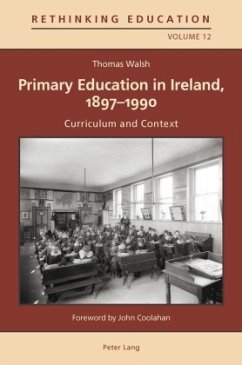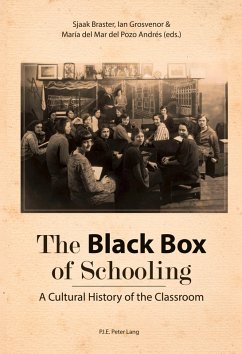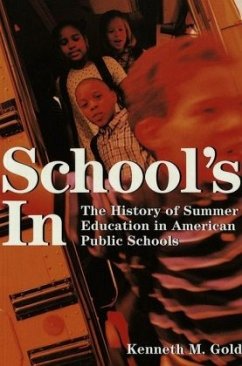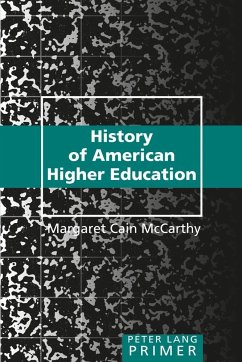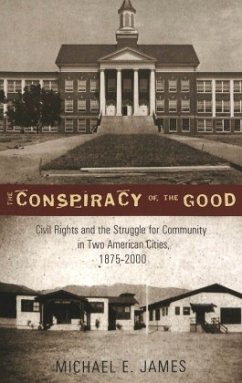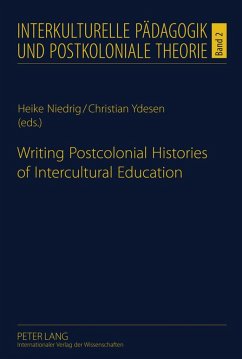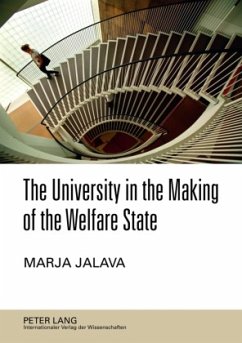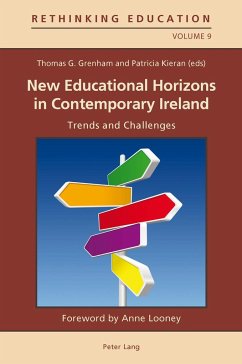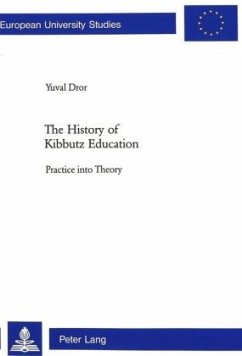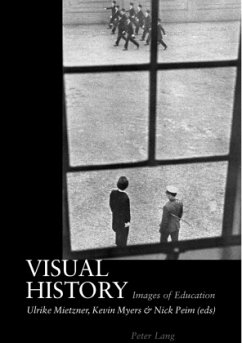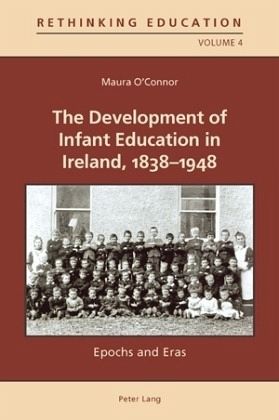
The Development of Infant Education in Ireland, 1838-1948
Epochs and Eras
Versandkostenfrei!
Versandfertig in 6-10 Tagen
91,55 €
inkl. MwSt.

PAYBACK Punkte
0 °P sammeln!
Winner of the Kevin Brehony Book Prize, awarded by the History of Education Society (UK)This is the first published historical analysis of the development of infant education in Ireland. It spans the period from the opening of the Model Infant School in Marlborough Street, Dublin, in 1838 to the introduction of the child-centred curriculum for infant classes in 1948. A study of early childhood education in Ireland in this period provides an understanding of how the child, childhood and the early years of school were viewed by society. Child-centredness had become a feature of educational pract...
Winner of the Kevin Brehony Book Prize, awarded by the History of Education Society (UK)
This is the first published historical analysis of the development of infant education in Ireland. It spans the period from the opening of the Model Infant School in Marlborough Street, Dublin, in 1838 to the introduction of the child-centred curriculum for infant classes in 1948. A study of early childhood education in Ireland in this period provides an understanding of how the child, childhood and the early years of school were viewed by society. Child-centredness had become a feature of educational practice in Europe in the early eighteenth century and was developed further by Rousseau, Pestalozzi and Froebel. How it manifested itself in schools in Ireland is critically explored in the book through an examination of key reports, as well as through new original primary source material not previously in the public domain. The curricular content, pedagogical approaches and organisation of infant schooling reveal much about the attitudes of those in authority to the youngest children and their educational needs. Interviews with kindergarten advisors, national (primary) school inspectors, lecturers on early childhood education, teachers of infants, and adults who were students in the early decades of the twentieth century provide further insights and enhance our understanding of policies and practices of the time.
This is the first published historical analysis of the development of infant education in Ireland. It spans the period from the opening of the Model Infant School in Marlborough Street, Dublin, in 1838 to the introduction of the child-centred curriculum for infant classes in 1948. A study of early childhood education in Ireland in this period provides an understanding of how the child, childhood and the early years of school were viewed by society. Child-centredness had become a feature of educational practice in Europe in the early eighteenth century and was developed further by Rousseau, Pestalozzi and Froebel. How it manifested itself in schools in Ireland is critically explored in the book through an examination of key reports, as well as through new original primary source material not previously in the public domain. The curricular content, pedagogical approaches and organisation of infant schooling reveal much about the attitudes of those in authority to the youngest children and their educational needs. Interviews with kindergarten advisors, national (primary) school inspectors, lecturers on early childhood education, teachers of infants, and adults who were students in the early decades of the twentieth century provide further insights and enhance our understanding of policies and practices of the time.



